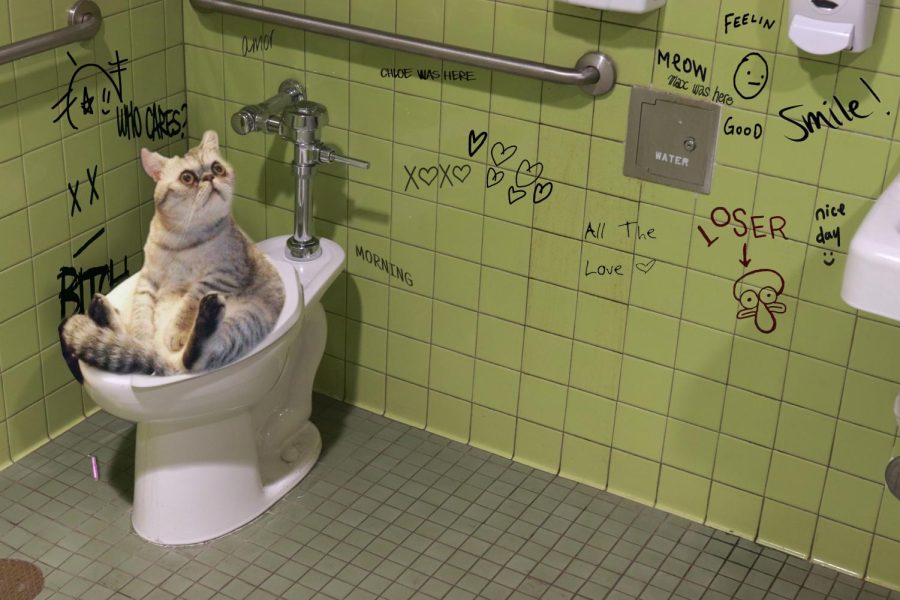Dangers of Disposing Cat Poop in Your Toilet - Precautionary Steps
Dangers of Disposing Cat Poop in Your Toilet - Precautionary Steps
Blog Article
Each person has got their private way of thinking about How to Dispose of Cat Poop and Litter Without Plastic Bags.

Introduction
As pet cat proprietors, it's vital to bear in mind how we take care of our feline friends' waste. While it might appear practical to purge pet cat poop down the bathroom, this technique can have damaging repercussions for both the environment and human health and wellness.
Alternatives to Flushing
Luckily, there are safer and extra accountable ways to take care of pet cat poop. Think about the adhering to alternatives:
1. Scoop and Dispose in Trash
The most typical approach of dealing with pet cat poop is to scoop it into a naturally degradable bag and throw it in the trash. Be sure to make use of a devoted litter scoop and get rid of the waste quickly.
2. Use Biodegradable Litter
Choose eco-friendly cat trash made from products such as corn or wheat. These clutters are environmentally friendly and can be safely disposed of in the garbage.
3. Hide in the Yard
If you have a backyard, consider burying cat waste in a designated area far from veggie yards and water resources. Make certain to dig deep enough to avoid contamination of groundwater.
4. Install a Pet Waste Disposal System
Buy a family pet waste disposal system specifically created for feline waste. These systems use enzymes to break down the waste, lowering odor and environmental effect.
Health and wellness Risks
Along with ecological concerns, flushing cat waste can also pose health and wellness dangers to human beings. Pet cat feces may consist of Toxoplasma gondii, a parasite that can create toxoplasmosis-- a possibly severe illness, specifically for expecting ladies and people with damaged body immune systems.
Ecological Impact
Flushing feline poop introduces damaging pathogens and bloodsuckers right into the water, posing a considerable threat to marine communities. These pollutants can negatively affect aquatic life and compromise water quality.
Conclusion
Responsible family pet possession prolongs past giving food and shelter-- it additionally entails correct waste management. By refraining from flushing feline poop down the toilet and opting for alternative disposal methods, we can decrease our ecological impact and secure human wellness.
Why Can’t I Flush Cat Poop?
It Spreads a Parasite
Cats are frequently infected with a parasite called toxoplasma gondii. The parasite causes an infection called toxoplasmosis. It is usually harmless to cats. The parasite only uses cat poop as a host for its eggs. Otherwise, the cat’s immune system usually keeps the infection at low enough levels to maintain its own health. But it does not stop the develop of eggs. These eggs are tiny and surprisingly tough. They may survive for a year before they begin to grow. But that’s the problem.
Our wastewater system is not designed to deal with toxoplasmosis eggs. Instead, most eggs will flush from your toilet into sewers and wastewater management plants. After the sewage is treated for many other harmful things in it, it is typically released into local rivers, lakes, or oceans. Here, the toxoplasmosis eggs can find new hosts, including starfish, crabs, otters, and many other wildlife. For many, this is a significant risk to their health. Toxoplasmosis can also end up infecting water sources that are important for agriculture, which means our deer, pigs, and sheep can get infected too.
Is There Risk to Humans?
There can be a risk to human life from flushing cat poop down the toilet. If you do so, the parasites from your cat’s poop can end up in shellfish, game animals, or livestock. If this meat is then served raw or undercooked, the people who eat it can get sick.
In fact, according to the CDC, 40 million people in the United States are infected with toxoplasma gondii. They get it from exposure to infected seafood, or from some kind of cat poop contamination, like drinking from a stream that is contaminated or touching anything that has come into contact with cat poop. That includes just cleaning a cat litter box.
Most people who get infected with these parasites will not develop any symptoms. However, for pregnant women or for those with compromised immune systems, the parasite can cause severe health problems.
How to Handle Cat Poop
The best way to handle cat poop is actually to clean the box more often. The eggs that the parasite sheds will not become active until one to five days after the cat poops. That means that if you clean daily, you’re much less likely to come into direct contact with infectious eggs.
That said, always dispose of cat poop in the garbage and not down the toilet. Wash your hands before and after you clean the litter box, and bring the bag of poop right outside to your garbage bins.
https://trenchlesssolutionsusa.com/why-cant-i-flush-cat-poop/

I was guided to that write-up about Can You Flush Cat Poop Down The Toilet? through an acquaintance on a different website. Sharing is good. One never knows, you may very well be doing someone a favor. I take joy in reading our article about Don’t flush cat feces down the toilet.
Set Up An Appointment Report this page